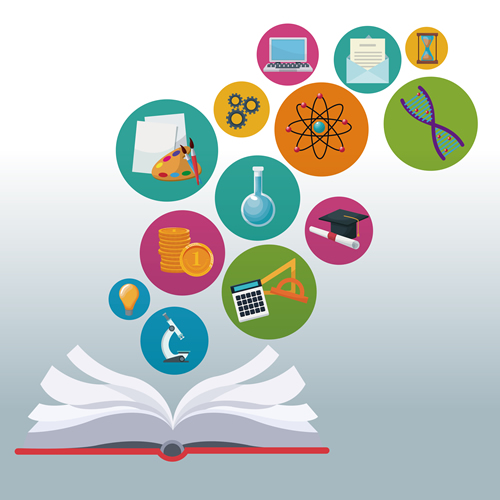Nationally, English learners (ELs) make up nearly 10 percent of PK-12 classrooms and almost 15 percent of urban classrooms, and these numbers are on the rise. Many supports are available for ELs (bilingual programs, SIOP, SEI), but the elementary science materials available are disproportionately directed toward grade-level readers.
In our work in local districts with high EL populations, we regularly see upper elementary students using K-1 science texts. While this might be acceptable for building language proficiency, content becomes a major issue. For example, a fifth-grader reading grade-one content is learning that during the day the sun crosses our sky. Fifth graders should be learning more abstract and complex concepts like how a star’s apparent brightness is related to its distance from Earth. Developmentally inappropriate content puts ELs behind in science from the start! Over multiple years, below grade-level content learning limits ELs’ science knowledge as well as access to secondary and post-secondary STEM programs and careers.
How can we make access to science more equitable? Here are three actions you can take in your own classroom to build science literacy, setting your ELs on a path toward success.
1. Support science reading with technology
A major problem with using below-grade readers in science is that the content is conceptually, socially, and emotionally geared toward younger learners. The EL fifth-graders we worked with refused to read any more picture-heavy books about mommy animals taking care of their babies—and we can’t blame them. Our ELs need reading support for texts about grade-appropriate content.
The Crack the Books interactive science series has excellent literacy supports including leveled readings for grade-appropriate science content. This app also provides clickable in-text links to helpful images, videos, and definitions as well as text magnification and highlighting options. All visual media can be accessed outside of the text passages to allow for an inquiry-based approach. Namoo is a terrific app both in the user interface and the content features. The interactive simulations are on target for the wide range of K-6 learners and the text is also leveled. Our students engaged much more fully with digital texts and actively used tech-based reading supports (highlighting, note-taking, looking up vocabulary). It made our teacher hearts happy to see students readily return to the text to answer questions.
2. Keep the science hands-on (even virtually)
As educators, teaching science primarily through reading makes us cringe. Whenever possible, support your ELs by engaging them in authentic NGSS science and engineering practices. Your students can collect evidence to build a scientific argument for the interdependence of Arctic organisms through the Marco Polo Arctic app, which lets them interactively explore and experiment with food sources and habitats in three arctic biomes. The well-researched simulation is engaging and useful for all elementary students.
Hands-on science learning is ideal, but space, time, and resources are often limited. First8Studios’ Wonderfarm enables students to plan and carry out investigations through fun plant-growth simulations. Its partner app, Plant Journal, makes the connection between the virtual and natural worlds through the use of real-world data collection and in-app analysis. These simulated first-hand experiences will help to get your ELs engaged in science and conceptually on track.
3. Support their English language development
Keep reading fundamentals—vocabulary, fluency, and comprehension—at the forefront of text-based science instruction. We use Osmo, a hands-on adaptive learning system that works with iPads and iPhones, to support EL literacy development. It functions as a fantastic support for ELs and all developing readers. The Osmo Word game allows students to develop fluency skills by working on letter recognition, decoding, and spelling. We easily customized the Osmo Word game with science vocabulary and students were able to work on language development through phonics, spelling, and matching for comprehension. The results were stronger reading scores and much fun.
An added bonus
The magic of these approaches is that they support ELs while also supporting reluctant or struggling readers. These tools have been a game changer for us as teacher educators and for the teachers we work with. Students are more engaged and their comprehension of science content is more developmentally appropriate. We hope your science lessons are fun learning experiences that excite and engage all your learners.
- 5 obstacles AI can help schools overcome - April 16, 2024
- Guidance counselors could help female high schoolers erase the STEM gender gap - April 16, 2024
- How video coaching inspires teacher self-reflection - April 15, 2024

